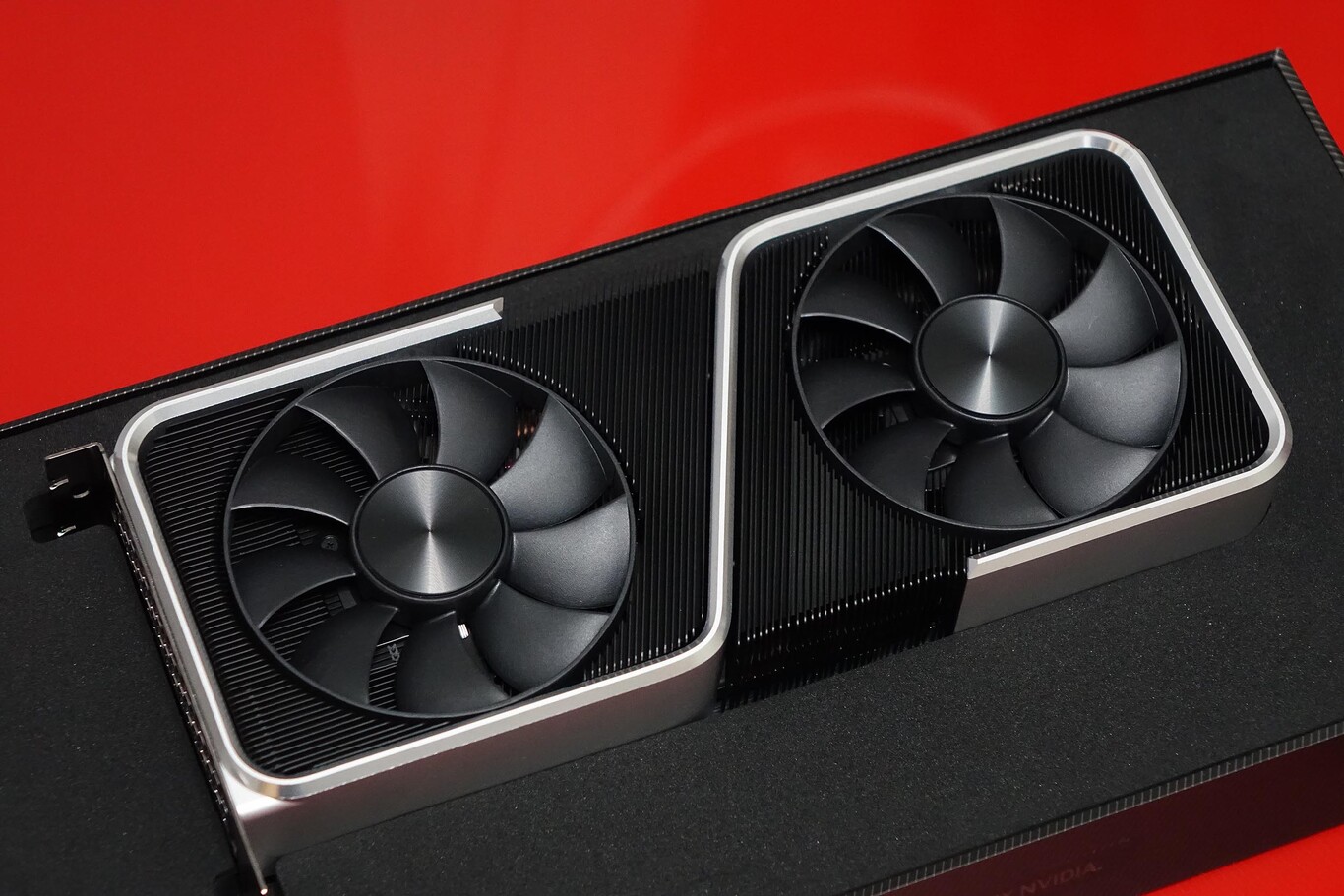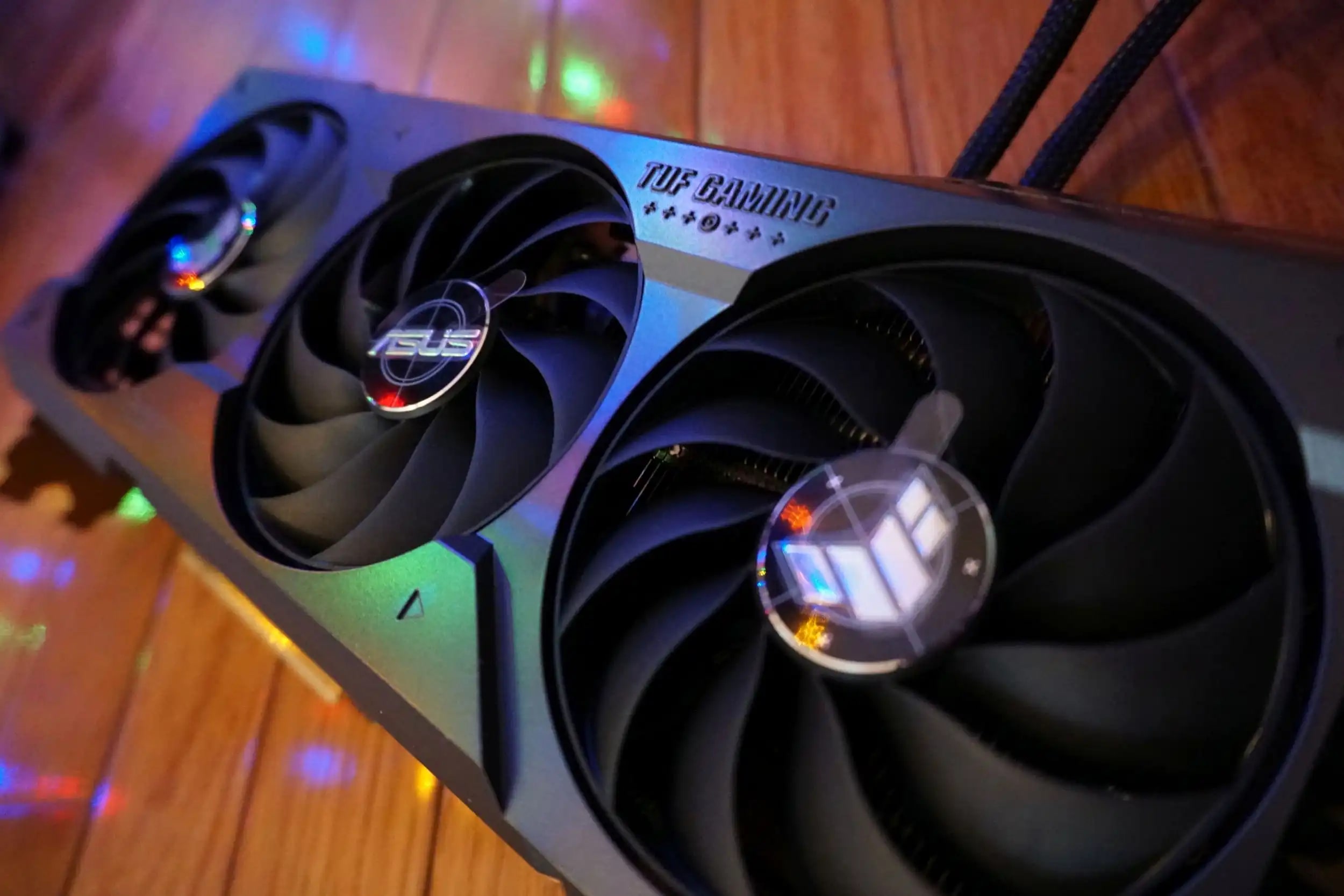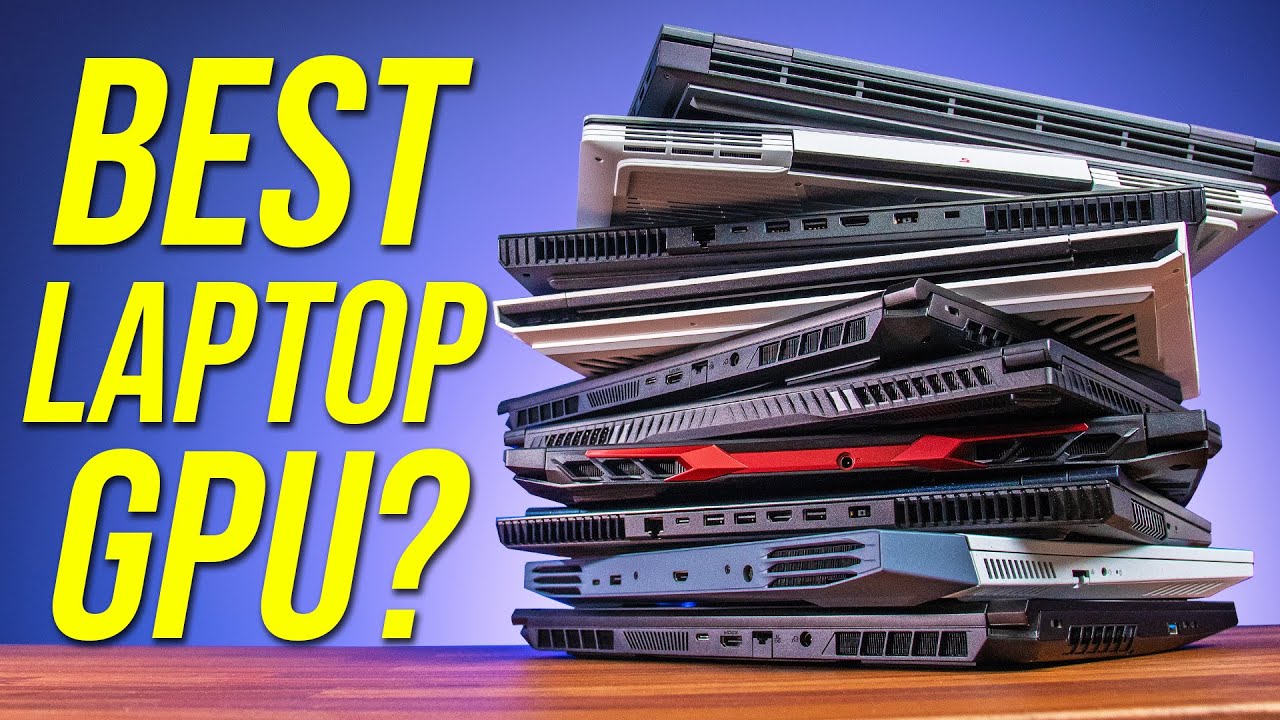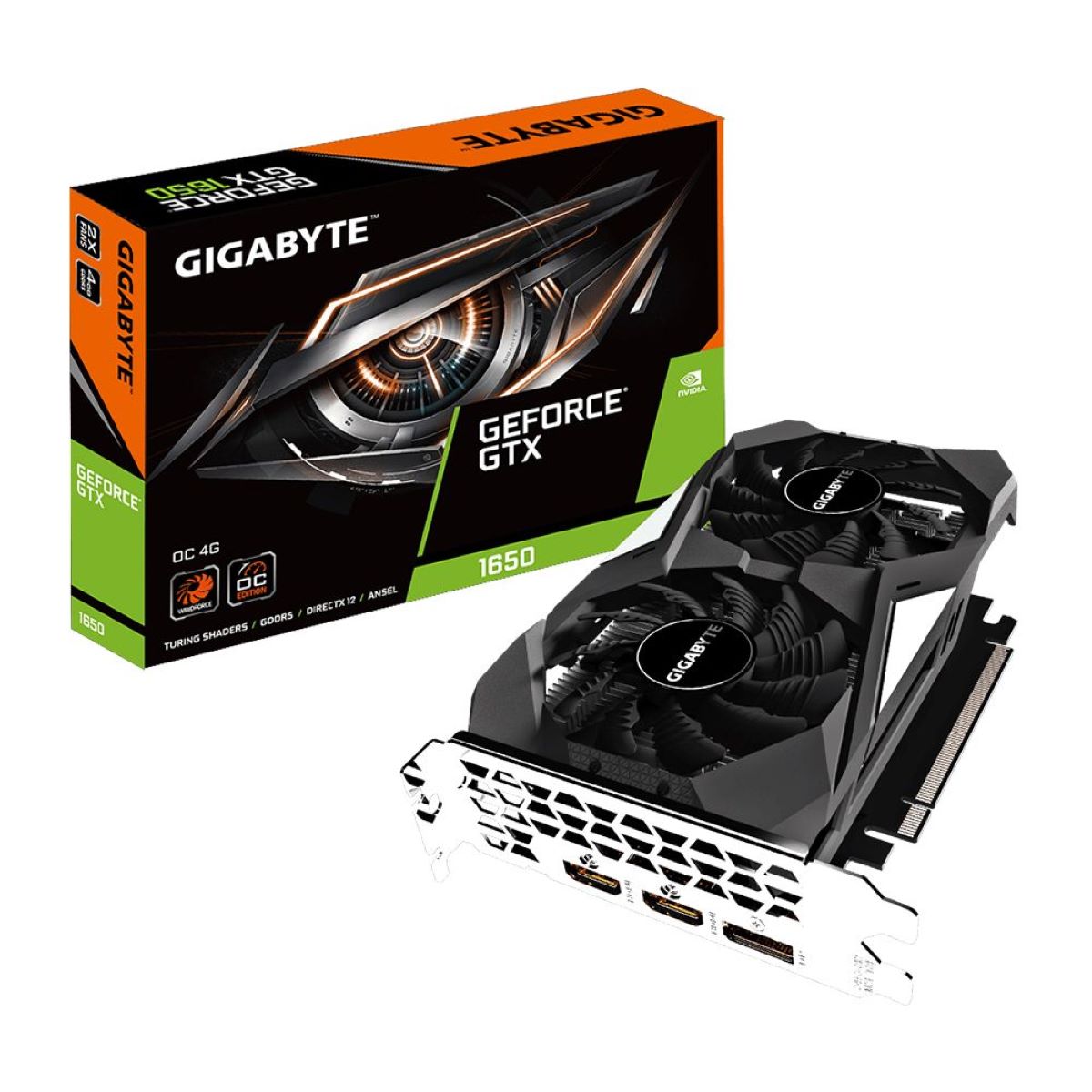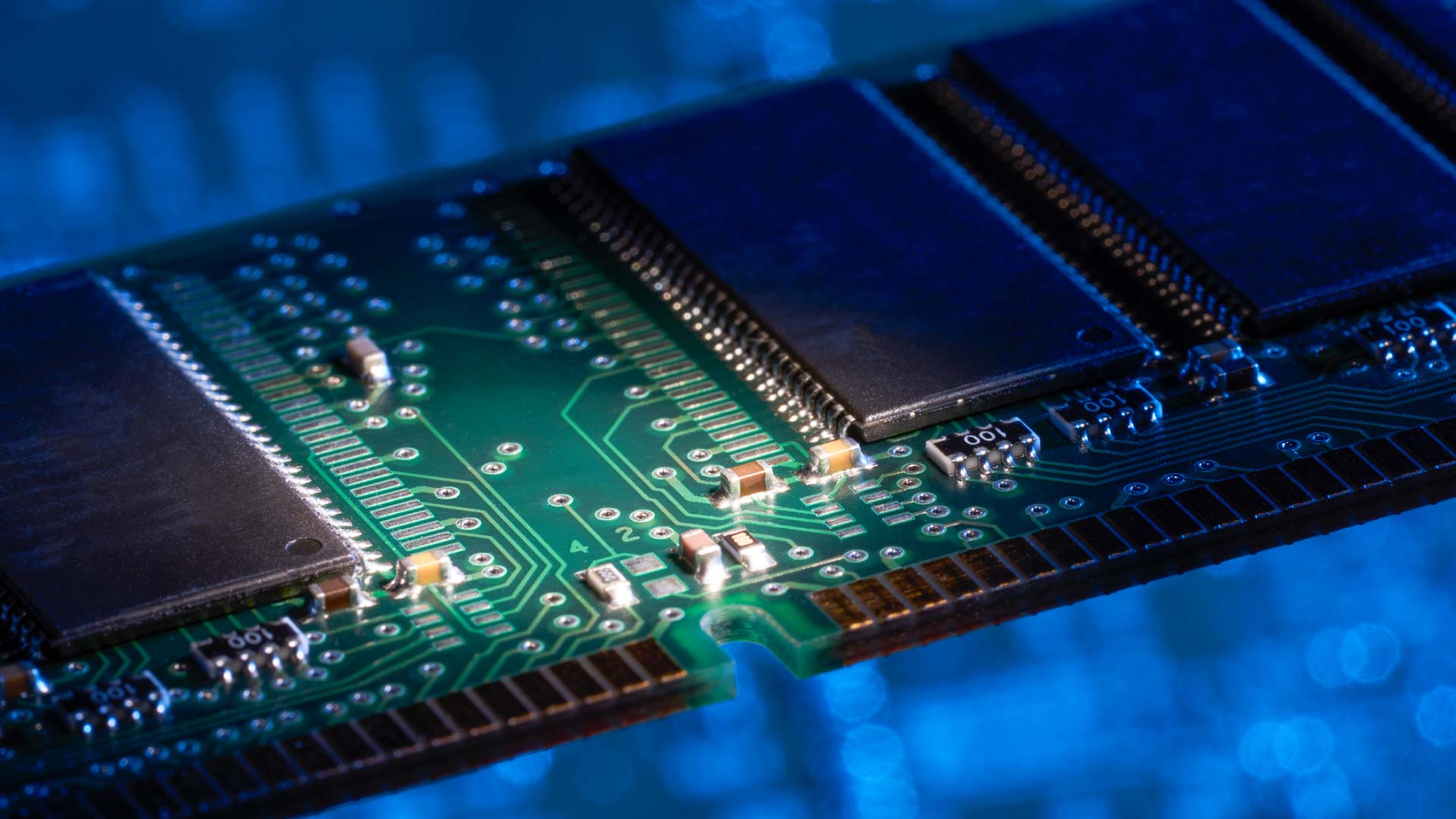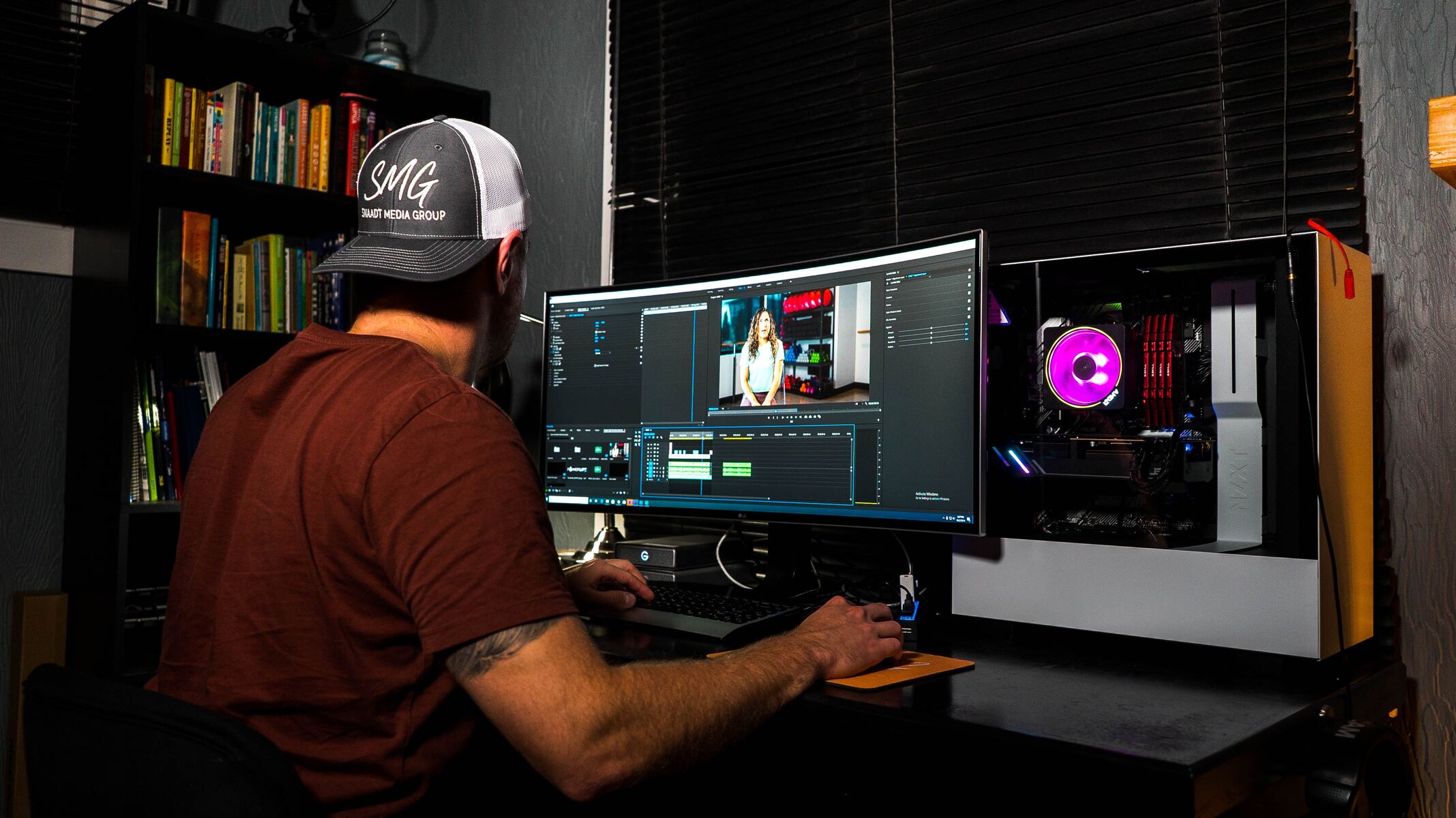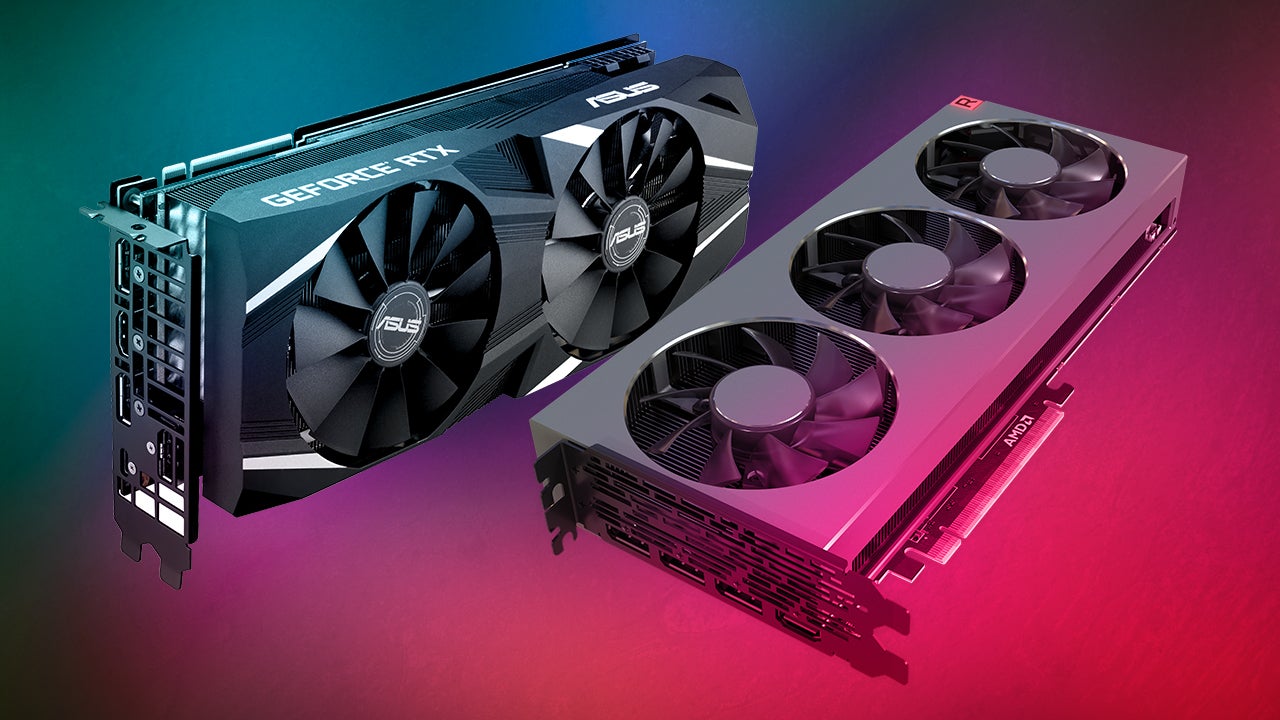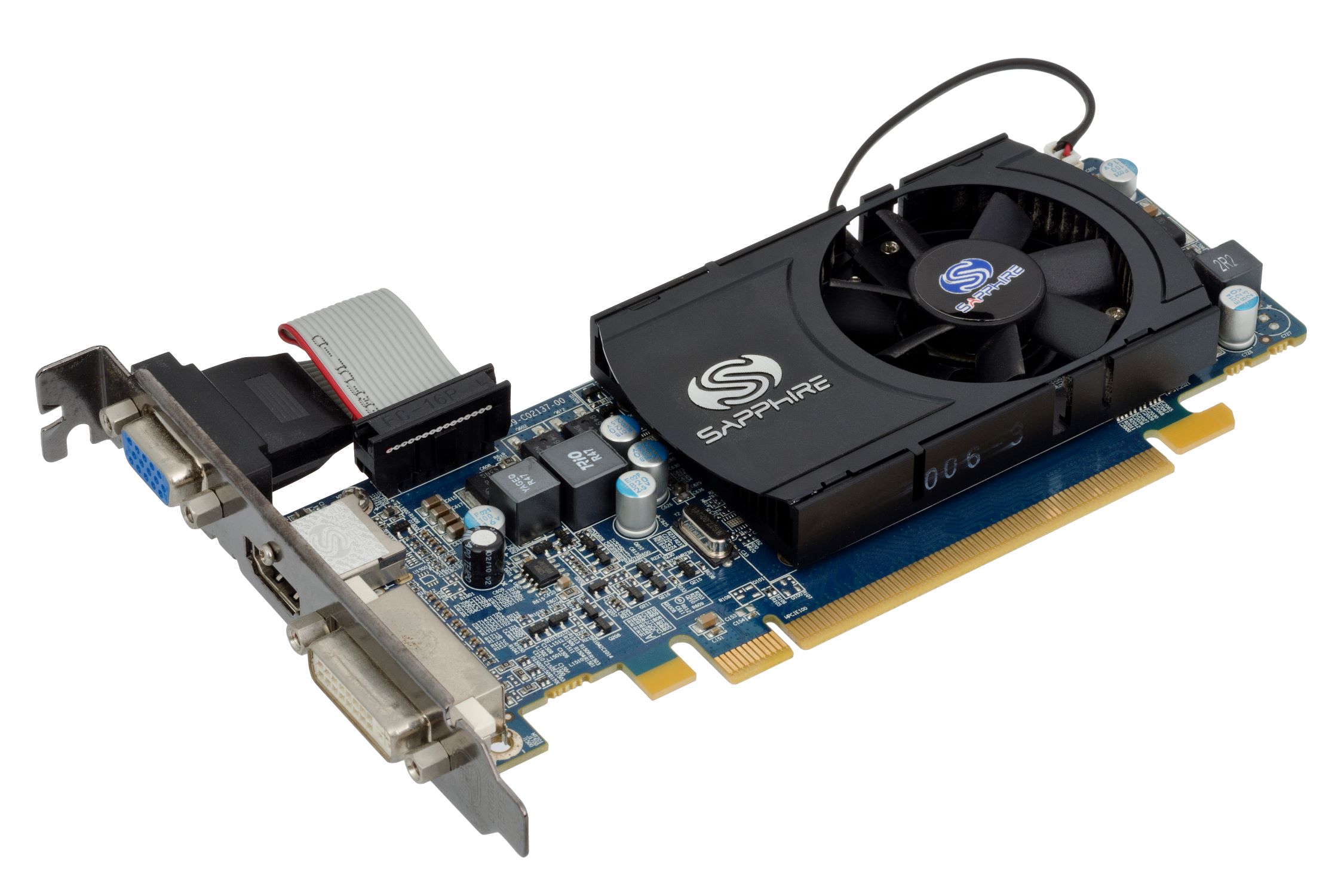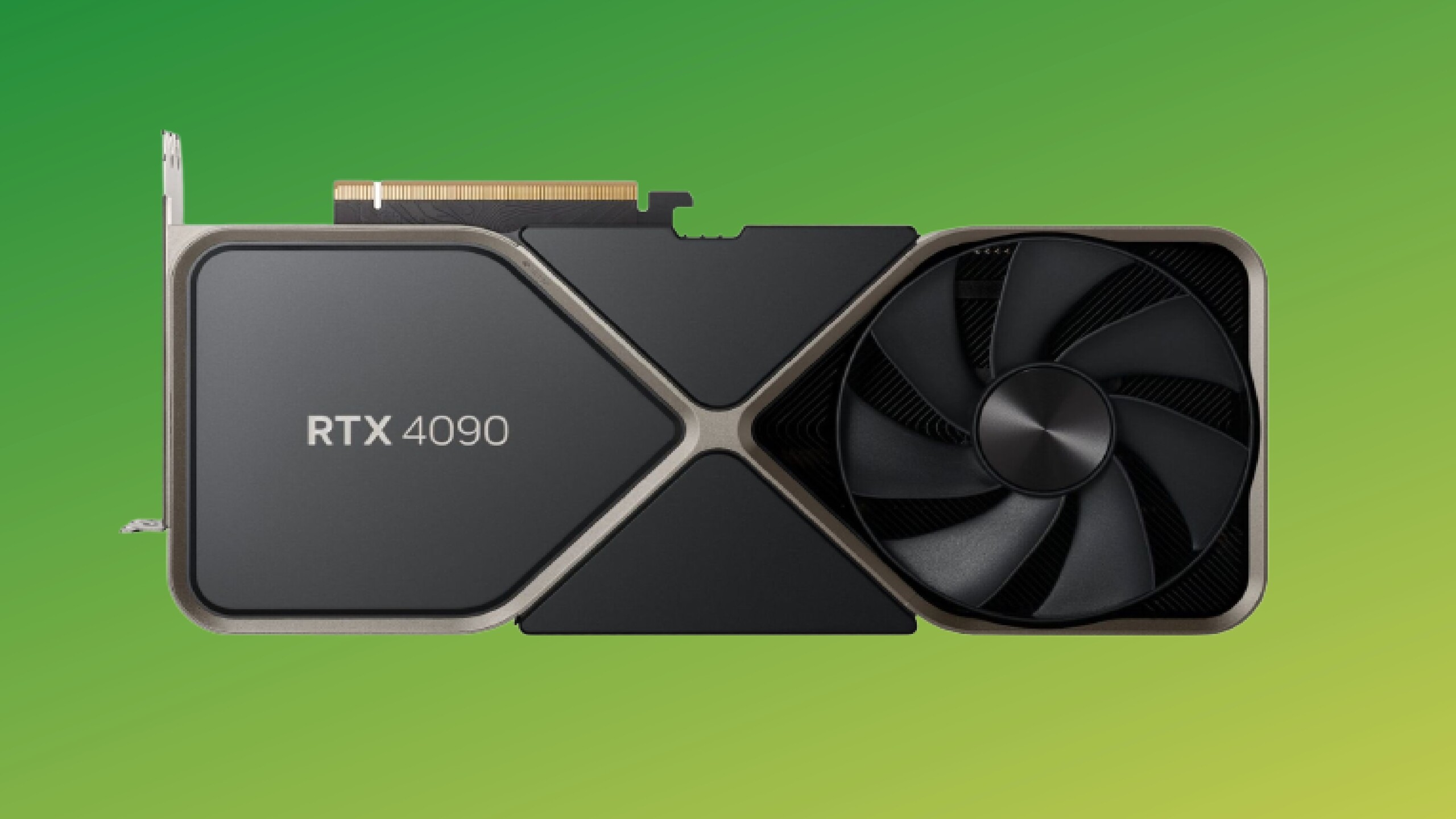Introduction
Video editing has become an essential part of many professions and hobbies, from content creators and filmmakers to vloggers and social media enthusiasts. The ability to create captivating visual content is greatly influenced by the hardware and software used in the video editing process. While a powerful computer with ample RAM and a fast processor are crucial components, the graphics processing unit (GPU) plays a significant role in the overall editing experience.
A GPU, also known as a graphics card, is responsible for processing and rendering images, videos, and animations. It is designed to handle complex graphical tasks and alleviate the strain on the computer’s central processing unit (CPU). In video editing, a good GPU is essential for handling high-resolution footage, smoothly delivering real-time previews, and accelerating rendering times.
When it comes to video editing, a powerful GPU can drastically improve the overall workflow and productivity. It enables video editors to work with demanding effects, apply complex transitions, and seamlessly play back footage without any lag or stutter. Additionally, a good GPU greatly impacts the render times, allowing editors to export their projects quickly and efficiently.
Factors such as video resolution, codec, and effects used can put immense strain on the GPU. Therefore, it is important to choose a GPU that is capable of handling the specific requirements of your video editing projects.
In this article, we will discuss the key factors to consider when choosing a GPU for video editing and provide recommendations for some of the best GPUs in the market.
What is a GPU?
A GPU, or graphics processing unit, is a specialized electronic circuit designed to handle and manipulate computer graphics. It is an essential component of modern computers, particularly for tasks that involve rendering images, videos, and animations.
Unlike the central processing unit (CPU), which handles general-purpose tasks and calculations, the GPU is specifically optimized for parallel processing and rendering visual data. It consists of thousands of small, efficient cores that work together to perform complex calculations required for graphics rendering.
GPUs are primarily used in applications that require intense graphical processing, such as gaming, 3D modeling, scientific simulations, and, of course, video editing. The power of a GPU lies in its ability to quickly process large amounts of data and display them on the screen in real time.
Video editing involves manipulating and enhancing footage, applying effects and transitions, and rendering the final output. These tasks can be highly resource-intensive, especially when working with high-resolution videos and complex visual effects. A powerful GPU helps to accelerate these tasks, allowing for smooth playback, faster video rendering, and overall improved editing experience.
Modern GPUs are equipped with dedicated memory, known as VRAM (video random access memory), which stores the video data and textures. The amount of VRAM available on a GPU directly affects the performance and capability of handling large video files and high-resolution footage.
In recent years, there has been a significant advancement in GPU technology, with manufacturers continually pushing boundaries to deliver more powerful and efficient graphics cards. GPUs are now available in a range of options, from workstation-grade cards optimized for professional video editing to consumer-level cards that offer excellent performance at a more affordable price point.
In the next section, we will explore why having a good GPU is vital for video editing and the benefits it brings to the editing process.
Why is a good GPU important for video editing?
Video editing involves working with large video files, applying effects, color grading, and rendering the final output. These tasks can be incredibly demanding on a computer system, particularly the graphics processing unit (GPU). Here’s why having a good GPU is crucial for video editing:
Real-time playback: A powerful GPU enables smooth real-time playback of high-resolution footage. It allows video editors to preview their work without lag or stutter, providing a more accurate representation of the final product. With a good GPU, editors can make precise adjustments and fine-tune their edits in real-time, resulting in a more efficient and productive editing workflow.
Efficient rendering: Rendering is a process where the computer converts the edited footage into a final video file. A good GPU significantly speeds up the rendering process by offloading the computational workload from the CPU. It can handle the complex calculations required for rendering effects, transitions, and color grading, resulting in faster render times and quicker project completion.
Hardware acceleration: Many video editing software programs leverage the power of GPUs through hardware acceleration. This means that certain editing tasks, such as applying effects, encoding video, and scaling, are performed using the GPU’s specialized processors instead of relying solely on the CPU. Hardware acceleration not only boosts performance but also improves the overall stability and responsiveness of the editing software.
Support for high-resolution footage: With the rise of 4K, 6K, and even 8K video resolutions, the demand for a robust GPU is more significant than ever. High-resolution footage requires a significant amount of processing power to handle the increased pixel count and maintain smooth playback. A good GPU with ample video memory can handle high-resolution footage without compromising performance, allowing video editors to work with confidence.
GPU-accelerated effects and plugins: Many video editing software applications offer a wide range of GPU-accelerated effects and plugins. These effects utilize the parallel processing capabilities of the GPU to deliver real-time previews and quick application. From complex visual effects to advanced color grading tools, a good GPU ensures that these effects can be applied and manipulated smoothly, enhancing the creative possibilities for video editors.
Having a good GPU is not only essential for efficient video editing but also for future-proofing your system. As technology advances and video editing workflows become more demanding, a powerful GPU ensures that you can handle the increasing requirements without the need for frequent hardware upgrades.
In the next section, we will explore the factors to consider when choosing a GPU for video editing to help you make an informed decision.
Factors to consider when choosing a GPU for video editing
When selecting a GPU for video editing, it’s important to consider several key factors to ensure compatibility with your editing software and optimal performance. Here are some factors to consider:
GPU VRAM: The amount of video random access memory (VRAM) on the GPU plays a crucial role in handling large video files and high-resolution footage. Ensure that the GPU you choose has an adequate amount of VRAM for your editing needs. Ideally, 8GB or more is recommended for smooth editing with 4K footage.
CUDA Cores (NVIDIA) or Cores (AMD): CUDA (Compute Unified Device Architecture) cores on NVIDIA GPUs and Cores on AMD GPUs are parallel processors that handle complex calculations. More CUDA cores or Cores generally result in better performance and faster rendering times. However, it’s important to note that the number of cores is not the only determining factor for performance; other factors also contribute to overall GPU performance.
Compatibility with editing software: Ensure that the GPU you choose is compatible with your video editing software. Different editing programs have specific requirements and may work better with certain GPUs due to optimized drivers and software integration. Check the software’s documentation or the GPU manufacturer’s website for compatibility information.
Driver support and updates: Regular driver updates from the GPU manufacturer are essential for optimal performance and compatibility with the latest editing software versions. Choose a GPU from a manufacturer known for providing timely driver updates and support, ensuring that you have access to the latest features and bug fixes.
Power requirements and cooling: High-performance GPUs draw a significant amount of power, so it’s important to verify that your system’s power supply can accommodate the GPU’s power requirements. Additionally, consider the cooling capabilities in your computer case to ensure proper heat dissipation for the GPU during intensive video editing tasks.
Budget: GPU prices can vary significantly based on factors such as performance, VRAM capacity, and brand. Set a budget that aligns with your needs and consider the performance-to-price ratio of GPUs in that range. It’s important to strike a balance between your budget and the performance requirements of your video editing projects.
Future scalability: Consider the future scalability of your GPU choice. As video editing workflows continue to evolve, it’s useful to invest in a GPU that offers room for future upgrades and can handle the increasing demands of editing software and higher-resolution video formats.
By considering these factors, you can make an informed decision and select a GPU that meets your video editing requirements, ensuring smooth playback, faster rendering, and an overall optimized editing experience.
In the next section, we will provide recommendations for some of the best GPUs available in the market for video editing.
Recommended GPUs for video editing
Choosing the right GPU for video editing can greatly enhance your editing workflow and overall productivity. Here are some of the top GPUs that are highly recommended for video editing:
NVIDIA GeForce RTX 30-series: The NVIDIA GeForce RTX 30-series graphics cards, such as the RTX 3080 and RTX 3090, offer exceptional performance and powerful features dedicated to video editing. These GPUs are equipped with a large amount of VRAM, advanced CUDA cores, and support for real-time ray tracing and AI-based technologies, delivering impressive playback and rendering performance for high-resolution footage.
AMD Radeon RX 6000-series: The AMD Radeon RX 6000-series graphics cards, including the RX 6700 XT and RX 6800, provide excellent performance for video editing tasks. With high VRAM capacity, improved compute units, and support for technologies like AMD Infinity Cache, these GPUs offer great value for their price point and can handle demanding video editing projects with ease.
NVIDIA Quadro RTX-series: The NVIDIA Quadro RTX-series GPUs, such as the RTX 5000 and RTX 6000, are designed for professional video editing workstations. With features like ECC memory, optimized driver support, and enhanced performance in professional software, these GPUs excel in handling complex editing tasks and offer superior stability and reliability.
AMD Radeon Pro WX-series: The AMD Radeon Pro WX-series graphics cards, including the WX 7100 and WX 8200, cater to professional video editing needs. These GPUs provide certified drivers, extensive VRAM, and enhanced compute performance, making them suitable for demanding editing workflows and professional-grade software applications.
NVIDIA GeForce GTX 1660 Ti/Super: The NVIDIA GeForce GTX 1660 Ti/Super graphics cards offer a solid performance-to-price ratio for video editing on a budget. With a decent amount of VRAM and CUDA cores, these GPUs can handle 1080p and even 1440p video editing tasks effectively, providing an affordable solution for entry-level video editors.
It’s important to keep in mind that the specific GPU that best suits your needs will depend on factors such as your budget, the editing software you use, and the requirements of your projects. Additionally, it’s always beneficial to refer to benchmarks and user reviews to gauge the performance and user satisfaction of different GPU options.
Ultimately, investing in a good GPU that meets your video editing requirements will ensure smoother playback, faster rendering times, and an optimized editing experience, allowing you to bring your creative vision to life efficiently.
Conclusion
Choosing the right graphics processing unit (GPU) is crucial for a seamless and efficient video editing experience. A good GPU enhances real-time playback, accelerates rendering times, and allows for the smooth handling of high-resolution footage and complex effects. By considering factors such as GPU VRAM, compatibility with editing software, driver support, power requirements, and budget, you can make an informed decision when selecting a GPU for video editing.
Recommended GPUs for video editing include the NVIDIA GeForce RTX 30-series and Quadro RTX-series, as well as the AMD Radeon RX 6000-series and Radeon Pro WX-series. These GPUs offer excellent performance, ample VRAM, and advanced features tailored to the needs of video editors, whether professional or on a budget.
However, it’s important to remember that the right GPU for video editing ultimately depends on your specific requirements and circumstances. Consider the demands of your video editing projects, the software you use, and your future scalability needs to ensure a successful investment in a GPU that will meet your present and future needs.
By carefully selecting a GPU that aligns with your video editing goals, you can unlock the full potential of your editing software, achieve faster rendering times, and enjoy a smoother creative process. So, take the time to research, compare options, and choose a GPU that will elevate your video editing capabilities while staying within your budget.
With a powerful GPU at your disposal, you’ll be empowered to create stunning videos, bring your creative vision to life, and make a lasting impact with your video editing projects.







